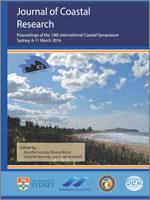Li, J.X.; Chen, Y.P., and Pan, S.Q., 2016. Modelling of Extreme Wave Climate in China Seas. In: Vila-Concejo, A.; Bruce, E.; Kennedy, D.M., and McCarroll, R.J. (eds.), Proceedings of the 14th International Coastal Symposium (Sydney, Australia). Journal of Coastal Research, Special Issue, No. 75, pp. 522–526. Coconut Creek (Florida), ISSN 0749-0208..
Accurately estimating the extreme wave climate is important to the ocean and coastal engineering design. In this study, the long-term wave climate from 1979 to 2013 over the northwest Pacific Ocean, centred at the China Seas (including the East China Seas and the South China Sea), is hindcasted by using the spectral wave model WAMC4. The model is driven by the wind forcing obtained from the recently released 6 hourly ECMWF (European Centre for Medium-range Weather Forecasts) reanalysis data, with the spatial resolution of 0.125°×0.125°. For the typhoon events, the parametric typhoon wind fields are generated and blended in the typhoon affected area. The statistical analysis of the extreme waves with 100-year return period at several observation stations are carried out. The results show a good agreement with the observation data, indicating that using the blended wind field for the modelling of extreme wave climate in China Seas can considerably improve the accuracy of the predicted wave heights.





